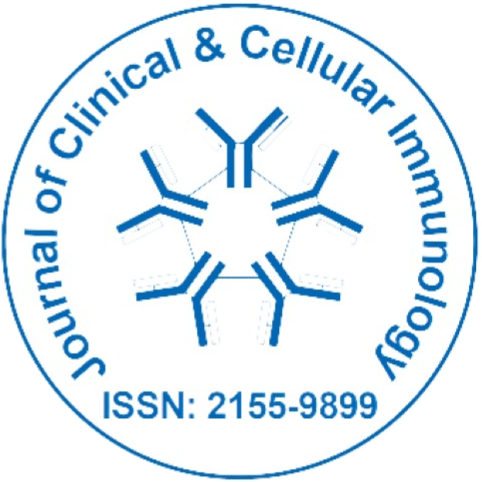
Journal of Clinical and Cellular Immunology
Open Access
ISSN: 2155-9899

ISSN: 2155-9899
Commentary - (2023)Volume 14, Issue 1
Cytokines are small proteins that are critical in controlling the growth and activity of additional immune system cells and blood cells. Cytokines affect the growth of all blood cells and other cells that help the body's immune and inflammation responses. They also help to boost anti-cancer activity by sending signals that can help to make abnormal cells die and normal cells live longer. There are different types of cytokines includes chemokine, interferon, interleukins, tumor necrosis factor and lymphocytes.
Interleukins
Interleukins (ILs) are a group of cytokines that are expressed and secreted by White Blood Cells (WBC). Interleukine-2 helps to grow the cells of immune system. They are different types of Interleukins such as IL-7, IL-12, IL-21 etc. continued to be studies. IL-2 is approved to treat the kidney cancer and melanoma. The common side effects of the IL-2 include fever, nausea, vomiting, fatigue, diarrhea etc. In rare cases, some serious side effects may occur that includes chest pain, abnormal heartbeat etc.
Interferon
Interferon’s (IFN) are the chemicals that help body to resist virus infections and cancers. The term interferon derived from the ability of the cytokines to interfere with viral replication. It includes three main classes such as Type-I IFN, Type-II IFN and Type-III IFN. Again, the type-I IFN is classified as IFN-α and IFN-β. Type I IFNs represents a potent antiviral effect by inhibiting viral replication, increasing the lysol potential of Natural Killer (NK) cells. Type II IFN has only one representative, IFN-γ. This cytokine plays an important role is macrophage stimulation both in innate and adaptive immune responses. IFN-α can be used to treat the Melanoma, Cutaneous (skin) T-cell lymphoma, Hairy cell leukemia etc. The side effects of the interferon’s include low WBC count, loss of appetite, fever, skin rashes, fatigue, vomiting etc.
Tumor necrosis factor
Tumor Necrosis Factor (TNF) is a cytokine which is derived from cytokine and discovered in 1975 as a molecule that is caused in vitro necrosis of tumors. There are classified into two types such as TNF-α and TNF-β. TNF-β, a type II trans-membrane protein, is an important key in the development of lymph nodes and Peyer’s patches and for the maintenance of secondary lymphoid organs.
Chemokine’s
Chemokine’s are small proteins molecules that are produced by the cells of immune system. The inflammatory chemokine’s includes CCL2, CCL3 and CCL5, CXCL1, CXCL2 and CXCL8. These act as chemo-attractants, leading to the migration of immune cells to an infection site, so they can target and destroy invading bodies such as microbes.
Lymphocytes
Lymphocytes are a subclass of cytokines that are produced by a type of immune cell known as a lymphocyte (T cells). Lymphocytes acts to attract further immune cells to mount an immune response, for occurrence in stimulating B cells to generate antibodies against the occupying pathogen.
Cytokines are universal molecules which act as key messengers for and between immune cells. It helps to maintain a delicate and intricate balance in the immune system. Cytokines affect the biological process viz. embryonic development, disease pathogenesis, non-specific response to infection, specific response to antigen, changes in cognitive functions and progression of the degenerative processes of aging. They also involved in the stem cell differentiation, allograft rejection and vaccine efficiency.
Citation: Roberta A (2023) A Short on Cytokines. J Clin Cell Immunol. 14:676.
Received: 29-Apr-2022, Manuscript No. JCCI-22-17257; Editor assigned: 02-May-2022, Pre QC No. JCCI-22-17257 (PQ); Reviewed: 16-May-2022, QC No. JCCI-22-17257; Revised: 23-Jan-2023, Manuscript No. JCCI-22-17257 (R); Published: 30-Jan-2023 , DOI: 10.35248/2155-9899.23.14.676
Copyright: © 2023 Roberta A. This is an open-access article distributed under the terms of the Creative Commons Attribution License, which permits unrestricted use, distribution, and reproduction in any medium, provided the original author and source are credited.